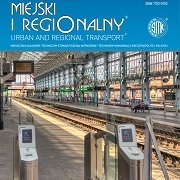Abstract 8/2019
Table of content
Krystian Banet – The impact of air temperature on the bike-sharing systems in Krakow and New York
Agnieszka Rogala, Bartłomiej Wiertel – Measurement of pedestrian and bike traffic – analysis of conflicts
Jan Aleksandrowicz – Informing passengers about vacancies in urban public transport vehicles with the use of automatic passenger counting systems
Jan Paszkowski , Jakub Salach – Escalator capacity analysis depending on the way of its usage
Bryniarska Zofia, Pashkevich Anton Pulawska-Obiedowska Sabina, Żakowska Lidia – Equal Opportunity Plans as an Opportunity for Equal Professional Development of Women and Men in Engineering
Abstracts
Krystian Banet
The impact of air temperature on the bike-sharing systems in Krakow and New York
Abstract: Bicycling has been becoming increasingly popular for daily commuting due to a number of benefits. Apart from health advantages, it also generates social, economic and environmental benefits. There are numerous factors and barriers to developing bicycle usage, including individual factors like age or gender as well as environmental factors. They also include density and quality of bicycle paths; one of the most specified environmental factors that affects bicycle traffic is the weather, especially air temperature and precipitation. Due to the fact that data on bicycle traffic are difficult to obtain, a decision was made to focus on city bike systems where the data on the number of rentals are readily available. This article reviews the impact of air temperature on the number of city bike rentals in Krakow and New York between April and December 2017. Analyses of results on a daily basis show that in Krakow the average daily air temperatures affect the number of rentals.
Key words: city bike, bike-sharing, bicycle traffic
Agnieszka Rogala, Bartłomiej Wiertel
Measurement of pedestrian and bike traffic –analysis of conflicts
Abstract: The volume of cycle traffic in Warsaw is still growing up. The cycle traffic in modal split in 2018 was estimated about 7% of all journeys, without pedestrian trips [1]. Administration of Municipal Roads (Zarząd Dróg Miejskich) in Warsaw every year conducts bicycle traffic measurement in several measuring points in a city. Increase in bicycle traffic and a large share of pedestrian traffic in the city center of Warsaw in connection with limited space results in a high number of conflicts between this two groups of users. It can be observed in a number of notifications that the Administration of Municipal Roads receives from the municipal system 19115 that is a platform for citizens to submit notifications about accidents or breakdowns occurring in a city. This article presents a survey focused on the classification of conflicts between pedestrians and cyclists by types and scale as well defines danger indicators which measure number of dangerous incidents per 100 pedestrians or per 100 cyclists. The survey conducted in 3 areas in a center of Warsaw was the base to specify the scale of conflicts, number of conflicts and recommendation for improvements of the infrastructure in order to raise up safety in areas with the highest number of dangerous incidents. As a result of this survey the Roads Administration in Warsaw has organized workshops referred to the issues of the problematic relations between cyclists and pedestrians. This workshops involved a lot of people from different groups, f.i.: citizens, cyclists, traffic engineers, officers from the city departments, members of associations like „Green Mazovia” (Zielone Mazowsze) or „Warsaw Critical Mass” (Warszawska Masa Krytyczna).
Key words: measurement of traffic, pedestrian traffic, bike traffic, road safety
Jan Aleksandrowicz
Informing passengers about vacancies in urban public transport vehicles with the use of automatic passenger counting systems
Abstract: The article is a summary of research conducted at the end of 2018, which is a continuation of measurements verifying the correctness of the data collected by the automatic passenger counting system used by the MPK S.A. in Krakow. The article is also an introduction of considerations on the project of application for passengers informing about current or forecast number of passengers in each urban public transport vehicle. The article has been divided into three parts. The first one is presenting the results of previous research and the current state of knowledge about automatic passenger counting systems. It recalls the most important results of previous analyses, including the low level of compatibility of measurements for articulated buses. The second part presents the current results of measurements being a continuation of the research conducted since 2017. The research has proved that system repair has significantly increased the compatibility of the collected data. Additionally, it has been shown that the average number of passengers in buses achieved in automatic measurements is very close to the real data. The third part presents conclusions from the whole research and describes more detailed the concept of the module presenting data on the number of passengers in vehicles within one of the mobile applications operating on the market.The final part of the article presents conclusions and plan of further research connected with the use of data from the automatic passenger counting system.
Key words: automatic passenger counting system, forecasting, number of bus passengers, mobile applications in public transport
Jan Paszkowski , Jakub Salach
Escalator capacity analysis depending on the way of its usage
Abstract: In the article the issue of using escalators and its impact on capacity and travel time is discussed. The aim of the article is to prove – using simulations, discussions and measurements – that the use of both sides of escalators increases their capacity. Measurements have been made on the percentage of people standing and walking while using escalators, on the distances between them and on the differences in travel time. Then, the results of the measurements have been analyzed in the simulation program in order to determine the optimal way of using the escalators for a given volume of traffic. This is to answer the question whether it is more legitimate to travel up and down the escalator standing or walking.
Key words: escalators, pedestrian traffic, capacity
Bryniarska Zofia, Pashkevich Anton Pulawska-Obiedowska Sabina, Żakowska Lidia
Equal Opportunity Plans as an Opportunity for Equal Professional Development of Women and Men in Engineering
Abstract: The article presents the assumptions and objectives of the European Commission on the implementation of gender equality programmes at both the EU’s strategic activities, as well as in the transport sector. Current actions and programmes to combat gender inequalities, the European Commission’s Strategy for gender equality in research and innovation, as well as the recommendations and action plans for greater employment opportunities for women are presented. All discussed actions are related to gender equality in the transport sector, with a view to the wider inclusion of women for greater and balanced economic growth. The main part of this article is dedicated to the project entitled “Gender Equality in Engineering through Communication and Commitment” of the acronym GEECCO, funded in the framework of HORIZON2020 programme, which is conducted in the Cracow University of Technology. Initial results of the research have been discussed, and the process to create and implement a gender equality plan (GEP) is described. GEP implementation at technical universities will contribute to better education in engineering, work culture and gender equality in the transport. Implementation of the GEP will help to improve the reputation and to enhance the modern image of the Cracow University of Technology not only in Poland, but throughout the European Union.
Key words: engineering, transport, equality of women and men, career development, GEECCO

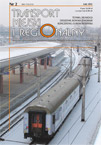 SITK RP
SITK RP 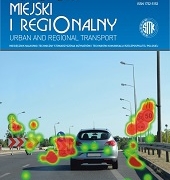
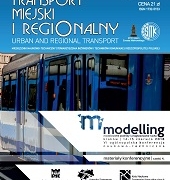
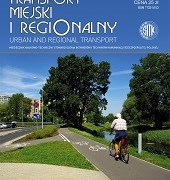
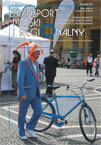 SITK RP
SITK RP 